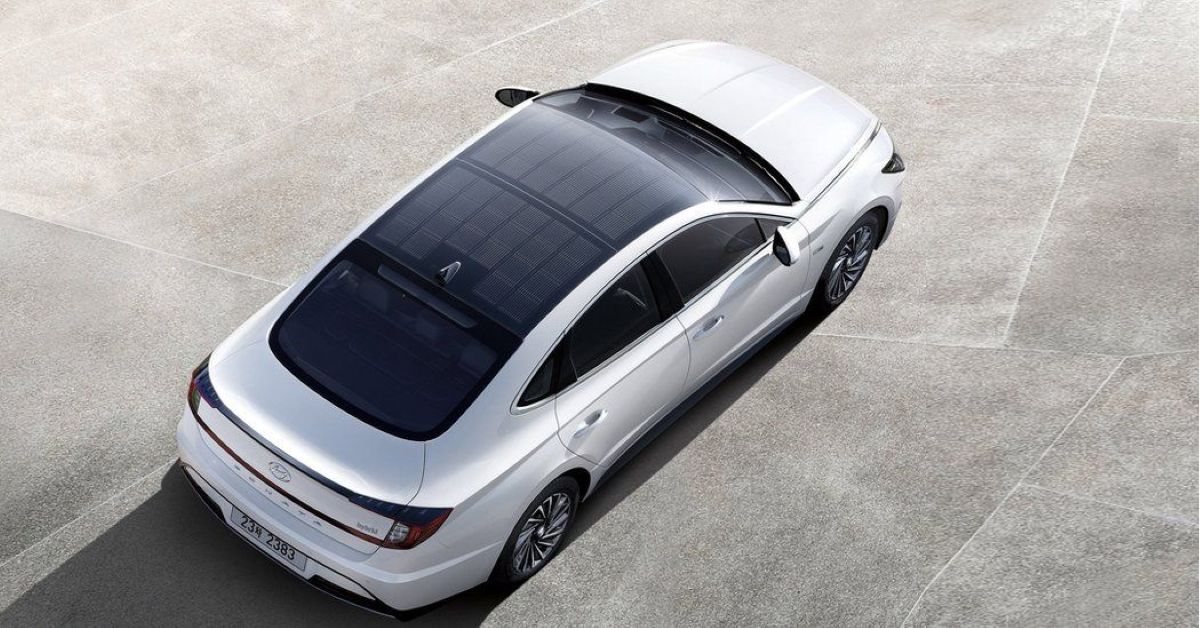14 Apr 2023
Why don’t electric cars have solar panels on the roof? We explain
While electric vehicles are finally gaining much-deserved popularity, there are still a few roadblocks to their wider acceptability. The prime reasons that are still restricting people from prioritizing electric vehicles over IC engine vehicles are the lack of charging infrastructure in the form of fast-charging stations, range anxiety and the time taken to charge such vehicles. These reasons become even mightier concerns during intercity drives. To address these issues, few car companies have started working on solar-powered electric cars. But is this idea compelling, feasible and affordable in the current scenario? Let us explain.
While the full-fledged transition from IC engine vehicles to battery electric vehicles is still some time to go, especially in the Indian context, the acceptance of EVs has surged massively in recent months. The extreme popularity of vehicles like Tata Nexon EV and MG ZS EV and launches of global EVs from luxury carmakers are testimonies to this fact.
Despite this rise in popularity, carmakers are still extremely careful in their EV plans due to issues surrounding range anxiety and long charging times. This issue has begun to get addressed by adapting solar energy to the electric mobility ecosystem. Several fast-charging stations have started installing canopies of solar panels that make charging electric vehicles faster and more affordable. It calls for contemplation of installing solar panels directly on the body panels of the car, which seem to be a sure-shot solution for the core issues of electric mobility. Though, it’s not all as easy as it looks.
Not a new idea
The idea of using solar panels on cars is being contemplated in real-sized cars since 1962. And since then, this idea is in the works for racing purposes and evolution of the technology, but not for full-fledged use in production models. Like all-electric vehicles, solar-powered vehicles are silent to run, produce zero emissions and require lower maintenance inputs.
One of the best examples of solar-powered electric cars is Sono Sion which is still under development by Germany-based Sono Motors since 2017. The Sono Sion has 248 solar cells integrated around its body that can stretch the range up to 245 km per week in peak conditions. However, despite bagging a significant amount of orders, the production of Sono Sion is not going to start before 2023.
USA-based car company Fisker introduced Ocean SUV with a solar roof in 2021, which features SolarSky roof technology that can produce solar energy to provide a range of around 2,500-3,000 km a year. Even Mercedes Benz has given a glimpse of this technology with the Vision EQXX concept, which has 117 solar cells on its roof that can provide an additional 25 km of range per day in ideal conditions.
But not entirely solar-powered
The examples above show that it is still impossible for them to be entirely solar-powered. Though, these vehicles showcase the slight amount of additional range they can offer as a boost in daily driving duties. In theory, if the batteries get recharged from the solar energy stored in the roof-mounted panel, the car can have fewer stops for charging. However, in practical, current solar cell technologies have low efficiency of around 15-25% for solar panels. This low efficiency adds to the long list of other challenges like cloudy weather, haze and low sun angles, which might not be enough to generate enough electricity required to charge the batteries optimally.
Another big concern is the limited surface area for installing solar cells in a vehicle. While transparent solar cells on the window panels to produce power seems to be a good idea, currently available transparent solar cells have much lower efficiencies and power densities than silicon cells.
All these factors combined make the idea of the installation of solar cells a not so feasible idea from the cost-benefit perspective. However, in future, there might be chances for evolution in this technology for vehicles which are specifically designed grounds-up with this aspect of using solar cells as its core focus.
Social Media
Blogs Source : cartoq
